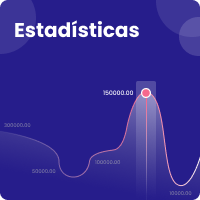CARDIORESPIRATORY SYSTEM MODELING IN PATIENTS INTOXICATED WITH ORGANOPHOSPHORUS COMPOUNDS
DOI:
https://doi.org/10.26507/ponencia.9Palabras clave:
mechanical ventilation, sympathetic system, parasympathetic systemResumen
The management of toxicity by poisoning with organophosphorus compounds is difficult for medical personnel due to the lack of knowledge about the clinical feature evolution and the low percentage of therapeutic efficiency used, which leads to patients to require long and expensive recovery periods in an intensive care unit. In the current work, an extended cardiorespiratory model considering the respiratory muscle activity was proposed to improve the determining of the appropriate timing for initiating extubation maneuvers in patients intoxicated with organophosphorus compounds. This opens the possibility of exploring and using surface electromyography as tool for understanding the cardiorespiratory response in these patients. According to the experimental data and optimization results, this muscular response is correlated with the parasympathetic-sympathetic action measured through the heart rate. This can be very important in diagnosis of health and disease states. Having more knowledge about the balance of these systems allows evaluating the efficiency of pharmacological treatment, given the clinical condition of the intoxicated patient
Descargas
Citas
Batzel, Jerry J., Laura Ellwein, and Mette S. Olufsen. 2011. "Modeling Cardio-Respiratory System Response to Inhaled CO2 in Patients with Congestive Heart Failure." Conference Proceedings: ... Annual International Conference of the IEEE Engineering in Medicine and Biology Society. IEEE Engineering in Medicine and Biology Society. Conference2011:2418-21.
https://doi.org/10.1109/IEMBS.2011.6090673
Cheng, Limei, Olga Ivanova, Hsing-Hua Fan, and Michael C. K. Khoo. 2010. "An Integrative Model of Respiratory and Cardiovascular Control in Sleep-Disordered Breathing." Respiratory Physiology & Neurobiology 174(1-2):4-28.
https://doi.org/10.1016/j.resp.2010.06.001
DiStefano, Joseph J. and Elliot M. Landaw. 2010. "Multiexponential, and Noncompartmental Modeling. I. Methodological Limitations and Physiological Interpretations." American Journal Of Physiology 84:651-64.
https://doi.org/10.1152/ajpregu.1984.246.5.R651
Eddleston, Michael, Peter Eyer, Franz Worek, Fahim Mohamed, and Lalith Senarathna. 2005. "Differences between Organophosphorus Insecticides in Human Self-Poisoning: A Prospective Cohort Study." Lancet 366(9495):1452-59.
https://doi.org/10.1016/S0140-6736(05)67598-8
Gill, P. E., W. Murray, M. A. Saunders, and M. H. Wright. 1984. "Procedures for Optimization Problems with a Mixture of Bounds and General Linear Constraints." ACM Transactions on Mathematical Software (TOMS) 10(3):282-98.
https://doi.org/10.1145/1271.1276
Instituto Nacional de Salud de Colmbia. 2016. "Boletin Epidemiológico Número 52 de 2016 - Colombia." Boletín Epidemiológico Semanal 52:50-52.
Mew, Emma J., Prianka Padmanathan, Flemming Konradsen, Michael Eddleston, Shu Sen Chang, Michael R. Phillips, and David Gunnell. 2017. "The Global Burden of Fatal Self-Poisoning with Pesticides 2006-15: Systematic Review." Journal of Affective Disorders219(May):93-104.
https://doi.org/10.1016/j.jad.2017.05.002
Pose, Darío, Ste De Benz, and Néstor Delfìno. 2000. "Intoxicación Aguda Factores de Riesgo Por Organofosforados." Revista Médica Del Uruguay 16(5-13).
Saul, J. P., R. D. Berger, P. Albrecht, S. P. Stein, M. H. Chen, and R. J. Cohen. 1991. "Transfer Function Analysis of the Circulation: Unique Insights into Cardiovascular Regulation." The American Journal of Physiology 261(4 Pt 2):H1231-45.
https://doi.org/10.1152/ajpheart.1991.261.4.H1231
Serna, Leidy Y., Miguel Ángel Mañanas, Jesús Marín, Alher Mauricio Hernández, and Salvador Benito. 2016. "Optimization Techniques in Respiratory Control System Models." Applied Soft Computing 48.
https://doi.org/10.1016/j.asoc.2016.07.033
Sharma, N. and S. Singh. 2000. "Neurological Syndromes Following Organophosphate Poisoning." Neurology India48(4):308-13.
Sungur, M. and M. Güven. 2001. "Intensive Care Management of Organophosphate Insecticide Poisoning." Critical Care (London, England) 5(4):211-15.
https://doi.org/10.1186/cc1025
Takasu, A., M. A. Takemoto, T. Sakamoto, and Y. Okada. 2005. "Clinical Feature of Organophosphate Poisoning Patients Requiring Prolonged Mechanical Ventilation." Chudoku Kenkyu: Chudoku Kenkyukai Jun Kikanshi = The Japanese Journal of Toxicology18(4):369-76.
Topor, Zbigniew L., Mariusz Pawlicki, and John E. Remmers. 2004. "A Computational Model of the Human Respiratory Control System: Responses to Hypoxia and Hypercapnia." Annals of Biomedical Engineering 32(11):1530-45.
https://doi.org/10.1114/B:ABME.0000049037.65204.4c
Zahn, Charles T. 1971. "Graph-Theoretical Methods for Detecting and Describing Gestalt Clusters." IEEE Transactions on Computers C- 20(1):68-86.
Descargas
Publicado
Cómo citar
Evento
Sección
| Estadísticas de artículo | |
|---|---|
| Vistas de resúmenes | |
| Vistas de PDF | |
| Descargas de PDF | |
| Vistas de HTML | |
| Otras vistas | |








